Camera traps have been a key part of the conservation toolkit for decades. Remotely triggered video or still cameras allow researchers and managers to monitor cryptic species, survey populations, and support enforcement responses by documenting illegal activities. Increasingly, machine learning is being implemented to automate the processing of data generated by camera traps.
A recent study published showed that, despite being well-established and widely used tools in conservation, progress in the development of camera traps has plateaued since the emergence of the modern model in the mid-2000s, leaving users struggling with many of the same issues they faced a decade ago. That manufacturer ratings have not improved over time, despite technological advancements, demonstrates the need for a new generation of innovative conservation camera traps. Join this group and explore existing efforts, established needs, and what next-generation camera traps might look like - including the integration of AI for data processing through initiatives like Wildlife Insights and Wild Me.
Group Highlights:
Our past Tech Tutors seasons featured multiple episodes for experienced and new camera trappers. How Do I Repair My Camera Traps? featured WILDLABS members Laure Joanny, Alistair Stewart, and Rob Appleby and featured many troubleshooting and DIY resources for common issues.
For camera trap users looking to incorporate machine learning into the data analysis process, Sara Beery's How do I get started using machine learning for my camera traps? is an incredible resource discussing the user-friendly tool MegaDetector.
And for those who are new to camera trapping, Marcella Kelly's How do I choose the right camera trap(s) based on interests, goals, and species? will help you make important decisions based on factors like species, environment, power, durability, and more.
Finally, for an in-depth conversation on camera trap hardware and software, check out the Camera Traps Virtual Meetup featuring Sara Beery, Roland Kays, and Sam Seccombe.
And while you're here, be sure to stop by the camera trap community's collaborative troubleshooting data bank, where we're compiling common problems with the goal of creating a consistent place to exchange tips and tricks!
Header photo: Stephanie O'Donnell
No showcases have been added to this group yet.



- 9 Resources
- 2 Discussions
- 9 Groups
- @TMaroulis
- | He
Farmer/Engineer looking to apply technology to the rangelands
- 0 Resources
- 0 Discussions
- 3 Groups
Data Scientist/AI Engineer, Birdwatcher, Trail Runner: here to learn about conservation tech & contribute where I can.
- 0 Resources
- 0 Discussions
- 11 Groups
- @peterdesmet
- | he/him
Biodiversity informatician at INBO. Passionate about open data and open science. I develop research software, maintain data standards and publish datasets, mostly for animal movement research.
- 0 Resources
- 1 Discussions
- 5 Groups
- @rosavespinoza
- | she/her
Amazon Scientist - National Geographic Explorer - Founder and Executive Director of Amazon Research Int

- 0 Resources
- 9 Discussions
- 3 Groups
- @antoniouzal
- | He, him
Associate Professor of Conservation Biology @ Nottingham Trent University (UK), involved in projects using GPS tracking, ecoacoustics, camera trapping and other awesome technology
- 0 Resources
- 0 Discussions
- 4 Groups
- @sehuebner
- | she/her
Wildlife Ecologist and Program Manager at the Smithsonian Institution
- 0 Resources
- 3 Discussions
- 9 Groups
- @steventay
- | TAY
Dynamique ET PROACTIF, JE SUIS PASSIONNÉ PAR LA PROTECTION DE L'ENVIRONNEMENT, LE TOURISME RESPONSABLE ET LA CONSERVATION DES ÉCOSYSTÈMES.
- 0 Resources
- 0 Discussions
- 8 Groups
- @diego_ellis_soto
- | he/him
University of California & California Academy of Sciences
Biodiversity |Technology | Socio-Ecological Systems | Wildlife Ecology | Remote Sensing | Conservation | K12STEM-education | Music | diegoellissoto.org
- 0 Resources
- 0 Discussions
- 20 Groups

- 0 Resources
- 3 Discussions
- 1 Groups
- @Alawa
- | She/Her
Passionate wildlife and biodiversity conservationist
- 0 Resources
- 0 Discussions
- 24 Groups
- @Samunaan
- | He
I am a conservation biologist; my research interests are behavioural ecology, human – wildlife interactions and livelihoods around conservation areas
- 0 Resources
- 0 Discussions
- 6 Groups
Are you stuck on an AI or ML challenge in your conservation work? Apply now for the chance to receive tailored expert advice from data scientists! Applications due 27th January 2023
18 January 2023
The British Ecological Society's journals always have topics that will interest our conservation tech community - in this particular issue, you'll find research on a large-scale camera trapping effort to monitor mammals...
13 January 2023
Link
We review key characteristics of four AI platforms—Conservation AI, MegaDetector, MLWIC2: Machine Learning for Wildlife Image Classification and Wildlife Insights—and two auxiliary platforms—Camelot and Timelapse—that...
13 January 2023
Sending real-time alerts from ecological sensors such as camera traps in areas with poor data connectivity is complex and involves integrating a large number of potentially complex hardware and software components. Our...
13 January 2023
WILDLABS and Fauna & Flora International are seeking an early career Vietnamese conservationist for 12-month paid internship position to grow and support the Southeast Asia regional community in our global...
11 January 2023
This position focuses on the ecology aspect of the project, while a second PhD in Ilmenau will be dealing with programming/AI development. Because of the high temporal resolution of our data, we can investigate how land...
9 January 2023
To assist with creative research project in the DC/VA/MD region
6 January 2023
The University of Alaska Fairbanks is seeking a research Post Doctoral Fellow to work in collaboration with the Arctic National Wildlife Refuge, U.S. Fish and Wildlife Service. The position will focus on using Machine...
7 December 2022
Arboreal camera trapping confirms occurrence of the thin-spined porcupine and several critically endangered species in Caparaó National Park, Brazil.
28 November 2022
First known baited underwater video match of an individual white shark, based on facial scars and other unique features White shark undertakes 1,100-mile (1800-km) transboundary swim from South Africa to Mozambique
25 October 2022
Five articles that include conservation tech published at Mongabay
20 October 2022
*New closing date!* WILDLABS and Fauna & Flora International are seeking an early career conservationist for 12-month paid internship position to grow and support the Southeast Asia regional community in our global...
19 October 2022
August 2025
event
event
September 2025
event
event
event
August 2023
event
July 2023
event
58 Products
Recently updated products
4 Products
Recently updated products
| Description | Activity | Replies | Groups | Updated |
|---|---|---|---|---|
| Hi all,I'm interested in this post for another context, tropical rainforest. I want to monitor forest cleareance in the Congo bassin rainforest through time-lapse images.... |
|
Camera Traps | 4 months 2 weeks ago | |
| Yep see you on friday |
+3
|
Geospatial, Acoustics, AI for Conservation, Camera Traps, Citizen Science, Community Base, Data management and processing tools, Emerging Tech, Open Source Solutions, Protected Area Management Tools | 4 months 2 weeks ago | |
| The magic of the WILDLABS community! @Chelsea_Smith @dmorris @pvlun thanks for showing everyone how it's done :) Chelsea, would be great to hear how this works out for you... |
+10
|
Camera Traps | 5 months ago | |
| I'm hoping someone can make some recommendations for a wildlife camera that can be set up on a small, man made island that will record... |
|
Camera Traps | 5 months 1 week ago | |
| Thanks Akiba! That's the conclusion I got to as well. Glad to have your vote too. Thanks! |
|
Camera Traps | 5 months 1 week ago | |
| Hi Dan, Not right now but I can envision many uses. A key problem in RS is data streams for validation and training of ML models, its really not yet a solved problem. Any... |
|
Emerging Tech, AI for Conservation, Animal Movement, Build Your Own Data Logger Community, Camera Traps, Connectivity, Conservation Tech Training and Education, Data management and processing tools, Geospatial, Sensors | 5 months 3 weeks ago | |
| Hello!I'm searching for a solution to tag EXIF metadata to images on an embedded device.I'm currently developing a camera trap that... |
|
Camera Traps | 5 months 2 weeks ago | |
| Thanks! Yes, we added electronics to power an external UV light only during periods when the camera is set to take pictures. |
+23
|
Autonomous Camera Traps for Insects, Camera Traps | 5 months 2 weeks ago | |
| I don't know any, but we have the same program idea (basically democratizing resource on conservation tech) that focuses on Indonesia region. But we are progressing slow.... |
|
Camera Traps | 5 months 2 weeks ago | |
| Hey Bob, thanks for the kind words! Your articles on Winterberry Wildlife have really been a big inspiration for me! There are extremely limited numbers of articles on trial... |
|
AI for Conservation, Camera Traps | 5 months 2 weeks ago | |
| Short update: the latest version 13.0.9 of Firetail is now available from https://www.firetail.de |
|
Animal Movement, Camera Traps, Software Development | 6 months ago | |
| Thank you, Dan -- I should have known you would have something like this! The tesseract package in R was quite simple to tune for my case, so I'm going to run it in batch tomorrow... |
|
Camera Traps | 6 months ago |
Troubleshooting: Trophy Cam Agressor
26 November 2018 6:53pm
26 January 2019 7:24pm
Neil was who I was thinking of. I'm not sure when he plans to next be here.
Peter
26 January 2019 11:39pm
Hi Peter, Ok cool, I'll ask him. I know Lucy is heading back over in a couple of months for sure though, so happy to give it to her for you.
Cheers,
Rob
Troubleshooting: Trophy Camera Brown, Bushnell
14 November 2018 1:01am
26 November 2018 2:57pm
Hi Marisa,
It sounds like the Iris on the lens may be stuck open or its been drifting into an open position (hence why you could see images for a while, but now the image is completely whited out). Is there the ability to alter the lens Iris on the camera?
If you can view what the image looks like directly from the camera (is there an ability to view the fiield of view as you set thecamera up?) you should see the same problem if the Iris is wide open.
Try and isolate the problem step by step to rule out each element of the technical system, whenever you have a technical fault. In this instance there isnt much that you have to play with on a simple trail camera. It would seem the power supply is OK because images are being captured (even though they are whited out) and the PIR is functioning to trigger the images. Check the SD card you are using works OK in another camera to rule that out as the problem too. Are the settings on this camera the same as others that are working correctly? If not alter them too.
There is also a detachable anti reflective LED cover on this Bushnell. Check its not been slipping over time and bouncing the LED illumination directly into the camera lens. That would white images out to varying degrees too.
Best,
Dave
Southern right whale superpod blows a hole in the record books
22 November 2018 12:00am
Canopy cameras shed new light on monkey business in Brazil
22 November 2018 12:00am
Camera traps designed for animals are now invading human privacy
22 November 2018 12:00am
A technologist's journey to protect wildlife: The reality and potential of conservation technology (recorded talk)
22 November 2018 12:00am
Data Needed: Mitigating rhino poaching through multimedia data mining
27 September 2018 3:43pm
28 September 2018 11:54am
Hi Steph,
Yes, my project objective is to detect rhinos and invaders at the sametime through videos not images. The tool is to be used by the game farm owners in order to protect the rhinos, well by invaders I imply the poachers.
Thank you very much for the information, yes I need funding as a realtime data will be advantageous for the better prediction. As we all aware mining videos is challenging as compared to images as videos are un-structured data.
Keep in touch.
Sibusiso
7 October 2018 3:26pm
Greetings Everyone,
Last week I have written to this community with regards to video data for attempting to analyse videos with rhino community, in order to conduct my research for object detection, object behaviour analysis and invader detection in a protected game farm. Seems It might take time to get such data, I wish to state it clear that the idea is to understand object detection, invader detection and behaviour analysis for wildlife animals and I focused on rhinos because thats what is dangered in my country (South Africa).
Nontheless, if now we dont have specific videos for rhinos, I still welcome video data for elephants. If again there are no video data, I can work on the images of both rhinos and elephants. As we know videos are just a set of continous images linked. For me to conduct my PhD research I depend on data and surely as the project progress, maybe we might find one or two videos that can use to justify my solution. So in simple, anyone who has elephant or rhino images can assist, as both of this wild animals are attcked by poachers for various reasons.
As the objective is to mitigate the poaching of the wild animals through multimedia data mining.
Please assist a fellow researcher...:)
Thanking you in advanced.
Regards
Sibusiso
25 October 2018 1:44am
Hi Sibusiso,
Are you looking for huge data sets or would vacation pictures (mostly Uganda) of elephants be of any help to you?
Cheers, Nigel
Drones, Orangutans, and Strangler Figs in Malaysian Borneo
22 October 2018 12:00am
Biology Undergrad Attempts Automated Species Recognition Using MacBook Air and Google
1 October 2018 12:00am
Recommendations Needed: Submersible Camera Traps
13 July 2018 3:15pm
13 August 2018 8:50pm
Hi @Chloe+Aust - great to see that you've found the right GSM camera trap for your needs. I was following this thread with interest as well: https://www.wildlabs.net/community/thread/388. A friend who works with underwater equipment said that he had some ideas. I'll put you in touch - it would be great if you can discuss via this thread so others can see his recommendations as well.
14 August 2018 1:38am
Hi Chole, there is a fellow named Sebastian Kennerknecht who is a camera trap wizzard. He has done a ton of work for Panthera. He might be a guy you want to speak with. You can find him on FB or I can privatley connect you. And, we should put your findings on the forum here so everyone can benefit.
24 August 2018 3:51pm
Amaxing, thank you! We had to put them out already so have gone with the super-tech solution of a *very* high pole for now but will look at speaking to Sebastian, or with your contact Rachel if that fails. Thank you so much! Chloe
Call for citizen scientists to help unravel the mysteries of South Sudan’s forests
22 August 2018 12:00am
The unexpected difficulty of getting videos from the field
25 July 2018 12:00am
New Paper: Automatically identifying, counting, and describing wild animals in camera-trap images with deep learning
7 June 2018 5:04pm
20 July 2018 3:58pm
Thanks, Steph. The camera trap ML nerds among us will have seen drafts of this kicking around in pre-print for a while now. Very cool to see it out finally.
I'll also draw everyone's attention to another study (involving some of the same authors) which has just come out in draft form: "Machine learning to classify animal species in camera trap images: applications in ecology".
2018 Browning Trail Cameras
27 May 2018 9:30pm
Recommendations Needed: Infrared/Thermal Cameras to Install in conservation perimeter fence
17 May 2018 8:06am
Feedback Needed: Time lapse imagery
15 May 2018 11:36am
[ARCHIVED]: Camera trapping workshop, London
14 May 2018 12:38pm
Recommendations Needed: Best sensors and cameras to install along fence gaps in a conservancy
16 April 2018 10:38am
2 May 2018 12:27pm
Hi Damian,
This may be part of your conversation with Alasdair and the ZSL team already, but you might want to connect with @Institute+IRNAS as well. They're collaborating with Alasdair's Arribada Initative, ZSL and others to tackle some of the challenges you've also been looking into (e.g LoRA systems). There's some more info about their work here: http://irnas.eu/conservation
Luka (if it is indeed you who is manning the Institute IRNAS member profile here on wildlabs), maybe you can jump in here?
Steph
2 May 2018 1:16pm
Hello Stephanie,
Thank you for the Introduction. This is nice and I think they can be very helpful to us at this moment. Especially on the acoustic sensors and LoRa network setup initiative.
Looking forward to getting intouch with them.
Regards,
Damian
7 May 2018 11:04am
Hi Damien,
Lora technology enables a range of very efficient solutions that you can deploy over a large area. We provide consultancy and field support for deploying such networks and work with Arribada team on developing custom hardware solutions for various applications in the conservation field. I suggest you explore the existing options and let us know if you need more customized solutions.
Regards,
Luka
Institute IRNAS
Recommendations Needed: Camera for remote work using Irriduim for image upload
15 February 2018 1:02pm
9 April 2018 12:30pm
Hi swinnard,
we have built a system this year for Arribada Initiative http://blog.arribada.org/ that is working closely with ZSL that implements the functions you require to a large extent. The Arribada FMP device is open source open hardware and you can find more details here: https://github.com/IRNAS/arribada-fmp
The device has the following features:
* Solar powered
* Built-in camera
* RockBlock Iridium modem
* WiFi and LoraWAN communications (not required in you application)
* Ultrasonic distance sensor (not required in you application)
We have built a version of this device for Arribada Penguin monitoring: https://github.com/IRNAS/arribada-pmp which captures images hourly on Antarctica of penguins and stores to the SD card, without the Iridium comunication.
Note that the cost of Iridium system may be prohibitively expensive, see http://www.rock7mobile.com/products-rockblock
2000 credits for 800GBP will give about 100MB of capacity, which can translate to about one photo per day if a compressed resolution is sufficient. A full HD image will for example be 2.4MB.
A more optimal method would be to take a photo several times a day, process them using OpenCV or other image processing library to determine if the image is interesting and then send it via Iridium. This can save some data as well as generate interesting photos. All of them can be stored to the SD card and retrieved at a later point.
16 April 2018 3:26pm
Hi Institiue IRNAS,
Thank you very much for your response, it is very helpful information.
I will have a look in more detail into your camera. For us it is not possible to choose photos to be sent back, we need them all to come back via irridium, so it is definitely the part of the project that can quickly become cost prohibitive.
I've been in touch with a research group that used an Instant Detect camera from ZSL which they now want to sell, so I may well end up using that system. If not though, the system you are using looks great.
Thanks for sharing it with me.
26 April 2018 11:39pm
Dear All
Our group in Australia has developed a device for monitoring wild dogs/dingoes in remote areas and have a fully authomated system using Iridium and or 3-4G if available. This device is officially called Wild Dog Alert Node and will be capable of being deployed into remote areas, gathering image data using a unique sensor system, processing the image and sending it to the cloud where it is identified as a wild dog-dingo and an alarm is immediately triggered. In our case it is to prevent predation on livestock but this technology could easily be modified for any species. The R&D is being refined and we are expecting to start disseminating information soon in both scientific papers and general media https://invasives.com.au/research/wild-dog-alert
Conservation Technology User Guidelines Issue 4: Satellite remote sensing for conservation
23 April 2018 12:00am
Data Needed: Camera trap images for machine vision training
29 March 2017 8:06pm
29 January 2018 6:40pm
Just chiming in, and this might not be helpfull at all.. but I recently came across a blogpost about 'building the poor man's deep learning camera'. Especially as it touches https://www.makeartwithpython.com/blog/poor-mans-deep-learning-camera/
7 February 2018 3:22pm
Hey, this is really interesting @theraido, thanks for sharing. Kirk has a nice writing style that's really easy to understand.. to the point where I feel lulled into confidence that I'd be able to replicate the project without too much fuss (I suspect this might be rather a strong case of over confidence). I was also amused that waiting for the birds to appear at the feeder seemed to be the slowest part of the project.
It looks like it's going to be a series of tutorials, with the goal being to build an open platform for exploring crow intelligence. Eventually, he says like to identify individual crows in the wild, and give them the opportunity to pass a series of tests. So it'll be interesting to follow along and see whether he reaches this goal.
In case anyone is interested, the next tutorial posted so far is 'building the rich man's deep learning camera', where he shares how to build a self-contained deep learning camera to detect birds in the wild.
20 April 2018 4:19am
Sounds great!
I am doing the almost same thing, since here we have a problem between elephant and human living in the same area and conflict a lot. We would like to warn people when elephants are approching by camera trap's detection of elephants.
How is your work now? Maybe we could share some info and put it forward together.
Anton
Recommendations Needed: Software for sampling photos from video
6 July 2017 7:42pm
20 July 2017 3:01am
Thank you Jason :) I will check both the wildboo.org and the youtube video you sent. All the best
20 July 2017 3:02am
Thank you Peter...and cool picture :)
Best regards
Nuno
17 April 2018 8:23pm
My preference is to use Adobe Lightroom, allowing me to move forwards or backwards one frame at a time. I can also adjust the exposure. This is an example from one of my videos.
I hope this is helpful.
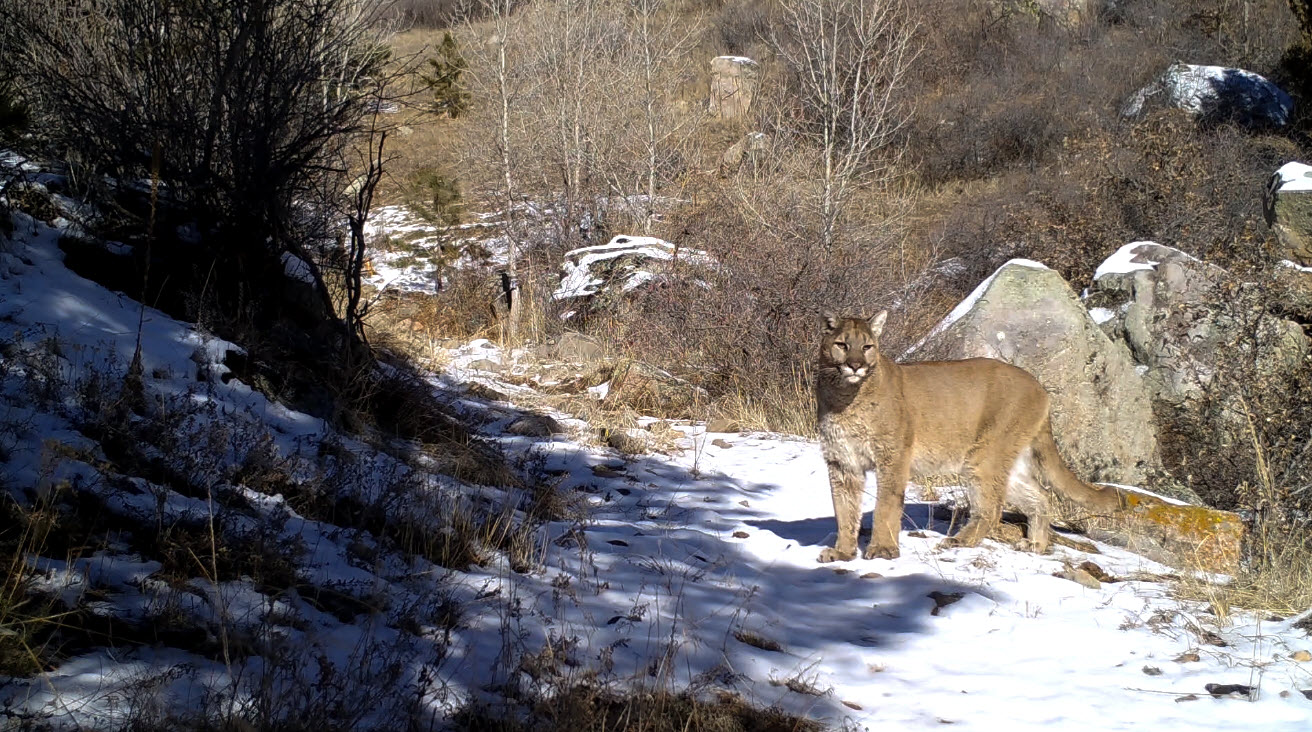
Camera Trapper from Colorado
17 April 2018 8:19pm
Camera trapping workshop, London
16 April 2018 12:00am
[ARCHIVED]: Camera-trapping data consultancy
13 April 2018 5:00pm
The Plant-Powered Camera Trap Challenge
3 April 2018 12:00am
#Tech4Wildlife Photo Challenge 2018: Our Top 10
3 March 2018 12:00am
Research: A rigorous, realistic and reproducible test of camera trap perfomance
7 November 2016 1:49pm
15 November 2016 6:08am
Also, just a general comment: some less epxensive cameras peform very well but may be more prone to 'glitches' over the duration of an extended study. I think the expectation of long term reliability is part of the reason some people choose the expenisve brand. Systematic tests of long duration reliability in field conditions would be really interesting, albeit probably too difficult/expensive to achieve.
15 November 2016 6:23am
Thank you Julia
Camera testing is certainly not Toffee's favorite activity - he would much rather be sniffing for scent marks !
The adverse effects of high temperatures on PIR are well established and they are a major problem anywhere that air temperatures get above about 30C. There is also a problem with cameras staying hotter than their surroundings for a few hours after sunset. I have also noticed that the infrared illuminator on the Reconyx actually heats up the camera.
Birds might be trickier to train than dogs, but you only need a reliable way to lure them to particular points within the field of view.
Certainly there are more factors to consider than only detection capability (though arguably that is the most important - better a fuzzy picture than none at all probably) and reliability is one of those. Bushnell Trophycams are notorious for losing their date settings (and this morning the one I am testing had done just that) for example. All sorts of equipment gets put through accelerated durability tests, and there is no reason why camera traps should not be similarly tested.
Given the huge projects that are built around camera trapping, and the scale of the conservation management decisions that are based on camera trap data it is a real problem that their performance is not tested and validated as fit for purpose.
Peter
7 February 2018 8:23pm
The sequence of images in the attached brief report shows why camera traps must be tested with real animal targets, and not with humans. The camera easily detects a human, but misses multiple images of the target dog.
Technology Empowered Conservation Lecture Series
18 January 2018 12:00am
Instant Detect 2.0: A Connected Future for Conservation
17 January 2018 12:00am

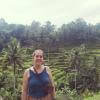




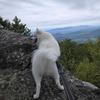




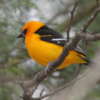







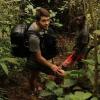











































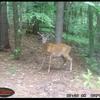





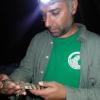




25 January 2019 3:21am
Ok no problem Peter. My colleague Neil Jordan works in Botswana, as does Lucy Ransome (who is heading there in April). Otherwise, do you have a contact I can send it to so they can get it to you?
Cheers and thanks again for the interest.
Rob